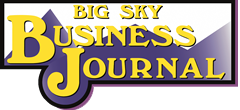Warnings have been greeted by derision and accusations as the mental derangement of conspiracy theorists, but then on April 28 it happened in Spain. Over half the nation – 50 million people – suffered a country-wide blackout. The biggest blackout in living memory.
Official investigations are on-going, but there’s little doubt that the reason was a sudden drop in power from the country’s electric grid – 15 gigawatts of power disappeared in a matter of seconds. Besides Spain, Portugal and parts of southern France were also impacted. It is Spain’s goal to have a grid powered almost exclusively by wind and solar by 2027, when their first reactor is slated to close in 2027, envisioning a grid powered almost exclusively by wind and solar, according to Epoch Times.
Ironically, the blackouts happened just 12 days after Spain proudly claimed it had powered its grid entirely by renewables for the first time on a weekday, according to PV Magazine.
Energy analysts are predicting that the investigators will find that the region’s heavy reliance on intermittent renewables enabled the grid collapse. To keep the frequency stable, the grid needs an unwavering force of power, referred to as “inertia.” Grid frequency, a 50Hz “heartbeat”, must stay balanced and is fundamental to how electricity travels through the grid.
A report in substack says 15 gigawatts (GW) of power vanished from the grid in a matter of seconds right before the blackout at around 12:35 p.m.
Fossil fuel oil and gas-fired stations and nuclear power plants have traditionally enabled the decades-old grid to keep a consistent frequency, explains Epoch Times. The variable output of renewables – wind and solar — can effectively throw the grid out of balance.
Political officials in Spain are firmly denying that the failure of renewables is the cause. But, they were given warning from industry experts well in advance. In its annual report in February, Red Eléctrica de España, (the Spanish grid operator) which is 20 percent owned by the state, warned about the loss of firm generation performance due to the phasing out of traditional power plants. “The closure of conventional generation plants such as coal, combined cycle, and nuclear (in response to regulatory requirements) leads to a reduction in the firm generation and balancing capacities of the electricity system, as well as its strength and inertia,” it said.
Normally, a drop in frequency can be mitigated by the spinning inertia of large, conventional generators, such as coal, natural gas, nuclear, and hydroelectric plants, explains substack.com, but wind and solar PV are inverter-based resources that do not provide any inertia to the grid, explains substack.com.
Substack explained in simple terms: “The grid essentially acts as one giant rotating mass (because generators are all spinning at exactly to same frequency) and the goal is to keep it rotating continuously. Similar to a rock rolling down a hill —the larger the rock (or the more synchronous generators on the grid), the more inertia it will have to power through any obstacle it may meet.
“Thermal plants create a very large, resilient boulder. Renewables, at best, create a pebble.”
At the time of the blackout, states substack.com, 78 percent of Spain’s electricity was being served by wind and solar, which do not provide meaningful amounts of inertia to the grid, and the remaining 22 percent was unable to make up for the loss in frequency.
Bloomberg, called the outage the “first major blackout of the renewable-energy era.” Given the irrational flight to intermittent energy sources as fail safe solutions to global warming fears, many nations of the world face the same threat.
Substack warns, “We see similar situations in the United States, where the Production Tax Credit (PTC) encourages wind generators to produce electricity even at negative prices. The negative effects of these subsidies are most acute in the Electric Reliability Corporation of Texas (ERCOT) region, where low wholesale power prices can force existing thermal generators off the grid and chill investment in new gas plants needed for reliability.”
If one thinks that tariffs can wreak economic havoc take a hard look at what happens when the grid fails. One outage can cost billions.
The sudden outage caused massive disruption to businesses, hospitals, public transportation, and communication systems, as most of the nation struggled without power for approximately 12 to 14 hours, reports substack.com.
According to the Insurance Journal:
Spain’s main business lobby CEOE estimated the outage would shave 1.6 billion euros ($1.82 billion), or 0.1%, off gross domestic product, noting it could take oil refineries a week or more to resume their operations fully, and that some industrial ovens had been damaged.
The meat industry estimated losses of up to 190 million euros as fridges lost power, among other factors. The blackout lasted more than 12 hours in some areas of Spain.
Other estimates are even higher, as Reuters reports the investment bank RBC said the economic cost of the blackout could range between 2.25 billion euros ($2.56 billion) and 4.5 billion euros ($5.11 billion), equating to 0.11 percent to 0.3 percent of the country’s 2024 gross domestic product (GDP) of $1.72 trillion.
substack.com noted, “Reuters have been quick to point out that the problem with Spain’s grid wasn’t that it was heavily dependent on renewables at the time of the blackouts, but rather that Spain needs to do a better job of managing the renewables.”
The problem for wind and solar advocates, they say, is their arguments that wind and solar are the cheapest forms of energy are reliant upon “creative” accounting schemes that omit many of the costs – costs such as additional transmission lines, backup power generators, overbuilding and curtailment costs, and the costs that would be incurred to build and operate equipment like grid forming inverters and synchronous condensers to bolster system inertia and maintain system frequency.


